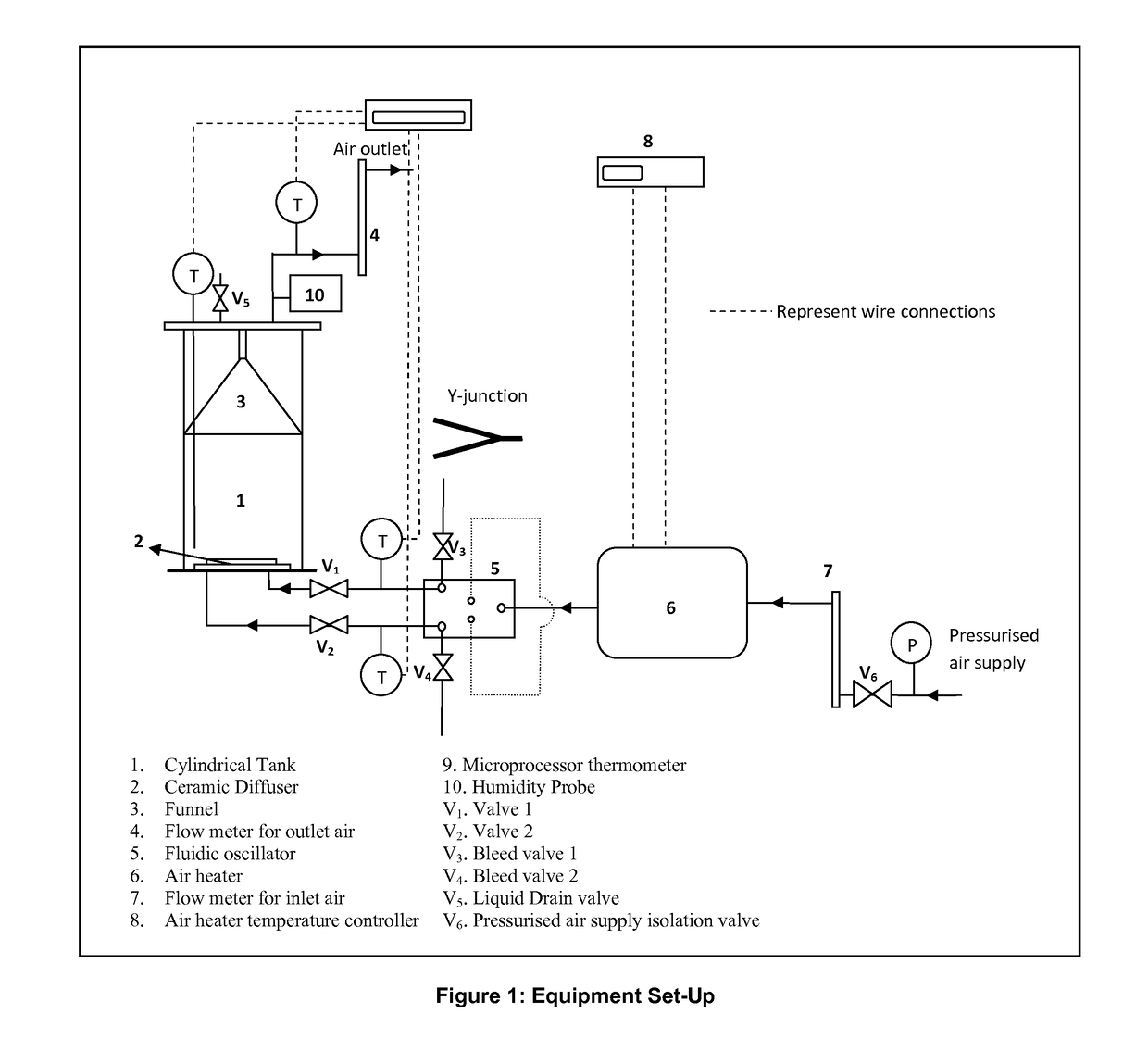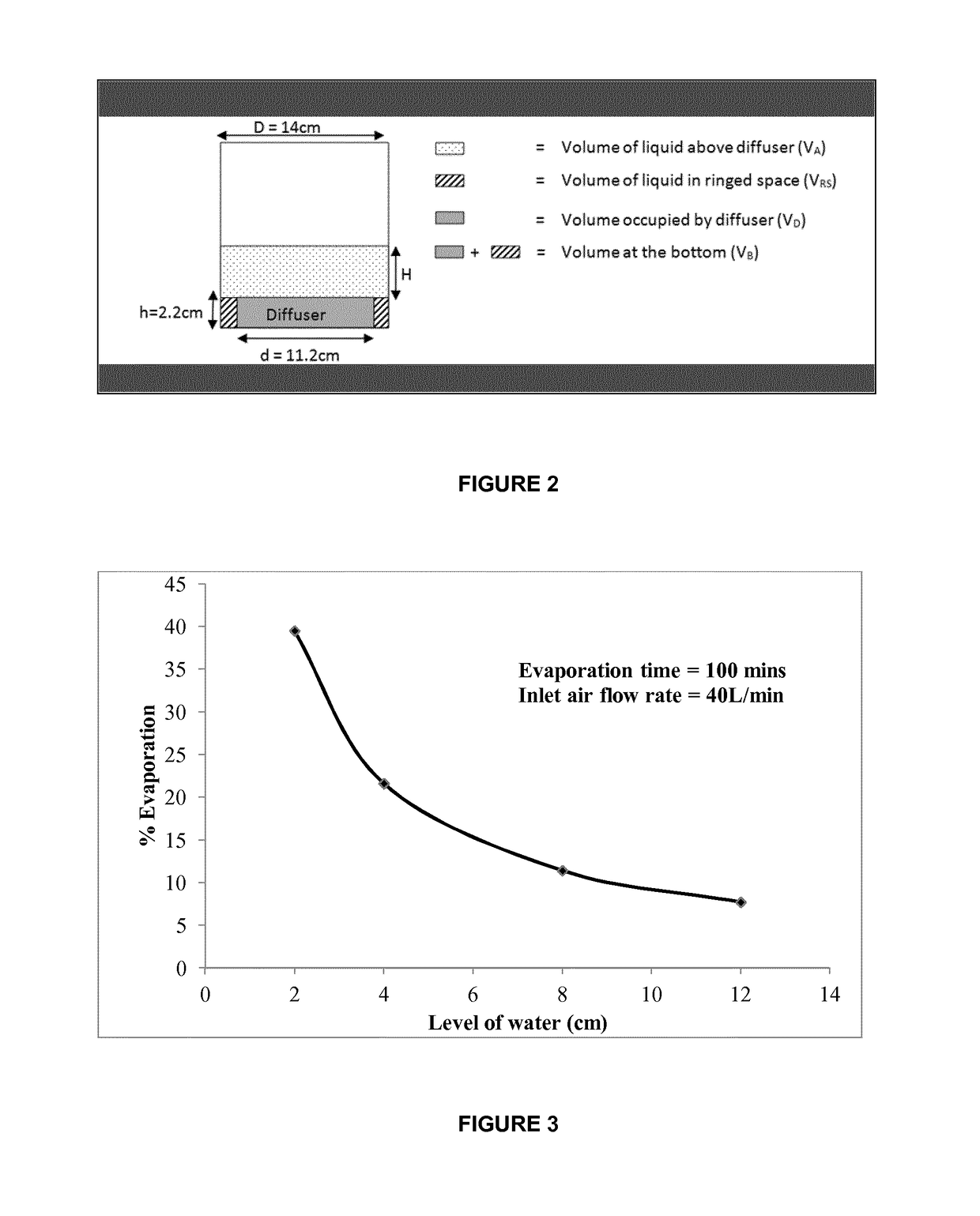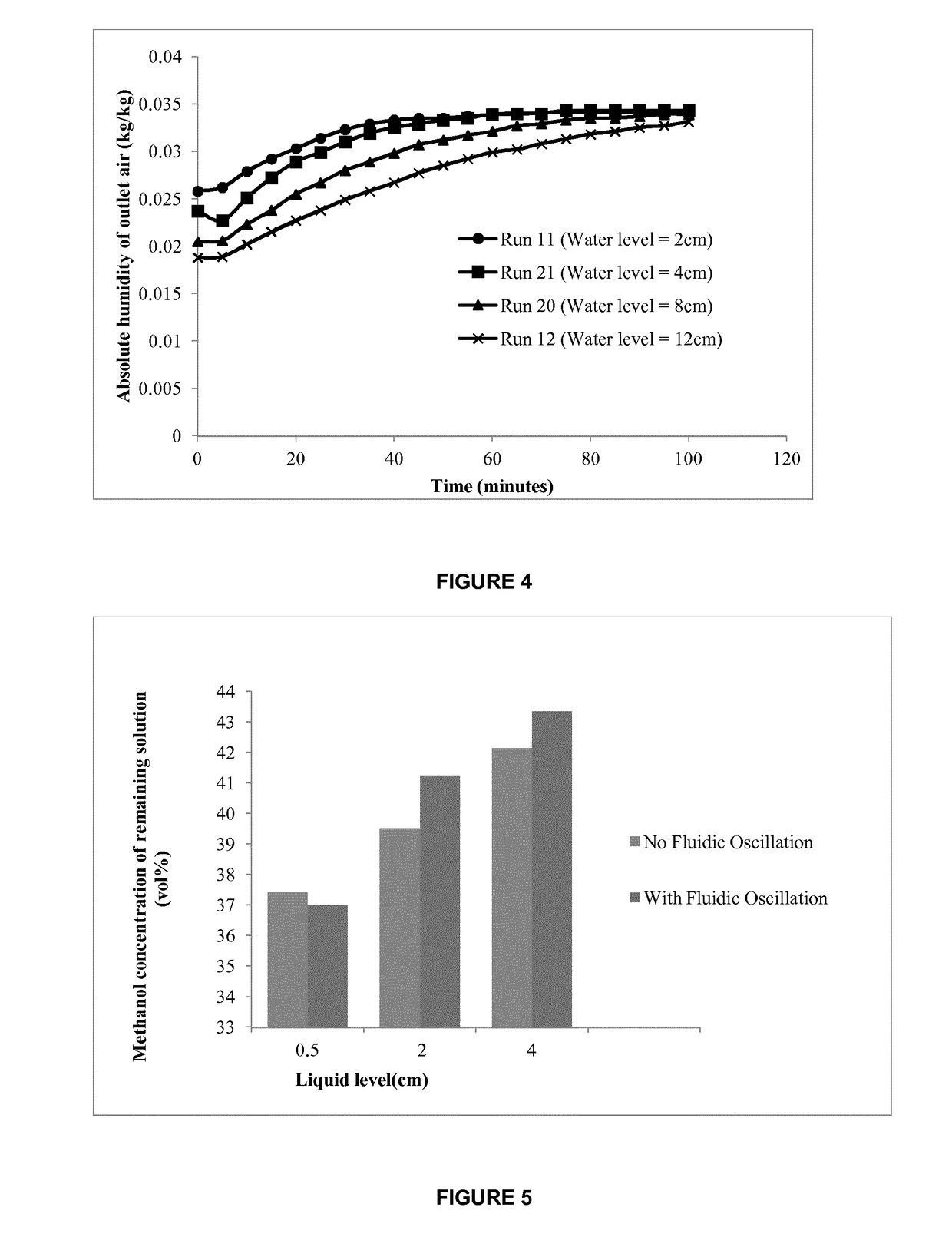Mass transfer processes with limited sensible heat exchange
a mass transfer and sensible technology, applied in separation processes, liquid degasification, evaporation, etc., can solve the problems of unstudied acceleration effects of microbubbles in physicochemical processes, unavoidable consequences, and relatively expensive microbubble generating clouds, etc., to minimize the increase in bubble size, low energy requirements, and easy manufacturing
- Summary
- Abstract
- Description
- Claims
- Application Information
AI Technical Summary
Benefits of technology
Problems solved by technology
Method used
Image
Examples
example 1
Assessment Example 1
[0137]FIGS. 3 and 4 effectively demonstrate that upon decreasing water level, evaporation rate is increased. The conditions plotted are for an air flow rate of 40 L / min. At such a high air flow rate, the bubbles formed (considering the absence of fluidic oscillation) should be relatively large, perhaps a few mm in size. Nevertheless, the size distribution of the bubbles formed in each experiment should be similar since the same air flow rate has been used. It is believed that after the bubbles are formed, they rise through the liquid and transfer latent heat to the surrounding fluid hence initiating the evaporation of liquid around the ‘skin’ of the bubbles. As the bubbles rise, maximum evaporation will occur at very low liquid levels after which the vapour will begin to lose heat and condense back into the liquid until it equilibrates. It is believed that there exists a critical height or residence time at which maximum re-condensation will occur. Before that cr...
example 2
Assessment Example 2
[0140]As indicated above, if the residence time of microbubbles is too high in a liquid, the evaporated vapour will lose heat to its surroundings and re-condense until it equilibrates with the liquid phase. Microbubbles will normally rise slowly in liquid compared to large bubbles as a consequence of Stokes law as discussed above. Although this behavior is seen as an advantage in many applications (especially in mass transfer), it constitutes a problem in the present invention since the goal is to achieve short residence time in the liquid layer to prevent sensible heat transfer and vapour re-condensation. As observed from FIG. 6, the increase in methanol concentration of remaining mixtures on moving from low to high liquid levels (for conditions with and without fluidic oscillation) indicates that methanol separation is reduced as liquid level increases, which is counterintuitive. It is believed that this behavior is most likely due to an increase in re-condensa...
example 3
[0147]In a further experiment, hot bone-dry air at a temperature around 145° C. was made to flow upwards through a micro porous diffuser into a cylindrical tank (i.e. bubble column) containing some water at room temperature, over a period of 250 minutes. The water temperature rose from 21.5° C. to 27.6° C. over 250 minutes of evaporation, while about 34 ml of liquid had evaporated. Surprisingly, the relative humidity of the outlet air was 100% for the duration of the experiment. As an attempt to achieve less than saturation relative humidity of the outlet air, they performed further experiments using lower liquid levels in the bubble column. Upon decreasing the liquid height, the outlet air remained at saturation relative humidity throughout the experiments. However, an increase in the absolute humidity of the outlet air was observed, while the water temperature did not increase as much.
[0148]This behavior signified that there exists a competition between the sensible heat transferr...
PUM
| Property | Measurement | Unit |
|---|---|---|
| thickness | aaaaa | aaaaa |
| thickness | aaaaa | aaaaa |
| thickness | aaaaa | aaaaa |
Abstract
Description
Claims
Application Information
 Login to View More
Login to View More - R&D
- Intellectual Property
- Life Sciences
- Materials
- Tech Scout
- Unparalleled Data Quality
- Higher Quality Content
- 60% Fewer Hallucinations
Browse by: Latest US Patents, China's latest patents, Technical Efficacy Thesaurus, Application Domain, Technology Topic, Popular Technical Reports.
© 2025 PatSnap. All rights reserved.Legal|Privacy policy|Modern Slavery Act Transparency Statement|Sitemap|About US| Contact US: help@patsnap.com



